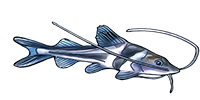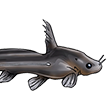http://www.tedsfishroom.com/sturisomalog.html
I have scoured this site for breeding accounts. I have kept and bred this species before (many years ago). I want to possibly try a few different techniques with these eggs/fry, because I never had a lot of success raising the fry (usually less than 10% survival rates). Here are some options I have come up with, what is your opinion of them?
1) The fish did not spawn on the wall of the tank. The spawning site is on a terra cotta pot under another pot. This provides the opportunity to pull the whole clutch on day six or seven and let them hatch (usually starting day
2) I suspect that the problem with raising the fry is keeping the balance between enough food and good water quality. So I am thinking GREEN WATER. I have a green water culture that is so dense you cannot see the back of the 20H it is in after 'cooking' for a few days. (I harvest green water weekly for daphnia and moina cultures). 30% daily changes with green water to provide a constant food supply.
3) Island in a sea of gunk... I have a very dense mass of green algae in my daphnia culture that I am sure is teeming with all sorts of tasty morsels (from snail excrement to some actual living vegetable matter). I am thinking of using this like a substrate in the ten gallon rearing tank. I would also place a medium-large piece of driftwood that is heavily planted with anubias and bolbitus fern. The plants have a healthy growth of green algae on them too. This island would give the fry a place to rise out of the gunk on the bottom.
I think that if I can get the fry through two weeks of this constant nutrient bath I could start cleaning the tank up a bit. By then they should be large enough to be better at seeking relatively remote feeding locations. My impression from keeping them years ago is that they are practically immobile for a week or so after hatching, and if they do not literally land on food (or food land on them) they will not seek it out to eat.
Good plans? Stupid plans?




